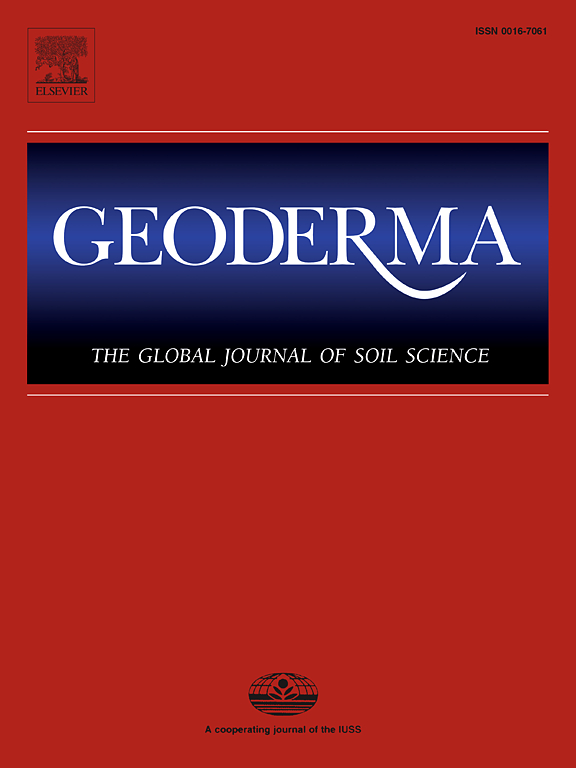Permafrost pore structure and its influence on microbial diversity: Insights from X-ray computed tomography
IF 5.6
1区 农林科学
Q1 SOIL SCIENCE
引用次数: 0
Abstract
Soil pore structure plays a critical role in shaping soil microbial communities, which directly influence biogeochemical cycling. A notable impact of soil pore structure on microbial communities is the inverse relationship between microbial diversity and hydrological pore connectivity, where increased hydrological pore connectivity reduces microbial diversity. Although well-studied in temperate systems, the importance of hydrological pore connectivity on soil microbial community diversity in permafrost soils is largely unknown. Although once thought to be devoid of microbial activity, more recent advances demonstrate permafrost is an active ecosystem albeit less than most unfrozen soil. Thus, these principles that govern unfrozen soils could remain impactful in permafrost. In this study, our objective was to quantify permafrost pore structure and determine if the inverse relationship between soil hydrological pore connectivity and microbial diversity persists in permafrost. To address these objectives, we analyzed eight permafrost cores from three distinct sites in Alaska. To quantify soil pore characteristics, we scanned intact permafrost using X-ray computed tomography. The Euler characteristic number was used to measure pore connectivity and serve as a proxy for potential hydrological connectivity, as direct measurement of hydrological connectivity was not possible. DNA and RNA were extracted from the scanned permafrost and analyzed via amplicon sequencing of the 16S region to quantify the total and active microbial community diversity. We found that permafrost soil shares characteristics with temperate soils despite limits in our analytical resolution (i.e., at an instrument scanning resolution of 20 µm, only macro-scale features (>75 µm) could be quantified). For example, we found that pores in the range of 75–1000 µm are the dominant pore size class and a positive relationship between total porosity and pore connectivity. Additionally, we identified pore connectivity as a potential driver of microbial diversity and provided evidence that conditions before the formation of permafrost exert a strong legacy effect on currently observed permafrost microbial diversity. These insights help to explain how soil physical structure acts to influence microbial communities in this extreme environment.
求助全文
约1分钟内获得全文
求助全文
来源期刊

Geoderma
农林科学-土壤科学
CiteScore
11.80
自引率
6.60%
发文量
597
审稿时长
58 days
期刊介绍:
Geoderma - the global journal of soil science - welcomes authors, readers and soil research from all parts of the world, encourages worldwide soil studies, and embraces all aspects of soil science and its associated pedagogy. The journal particularly welcomes interdisciplinary work focusing on dynamic soil processes and functions across space and time.
 求助内容:
求助内容: 应助结果提醒方式:
应助结果提醒方式:


